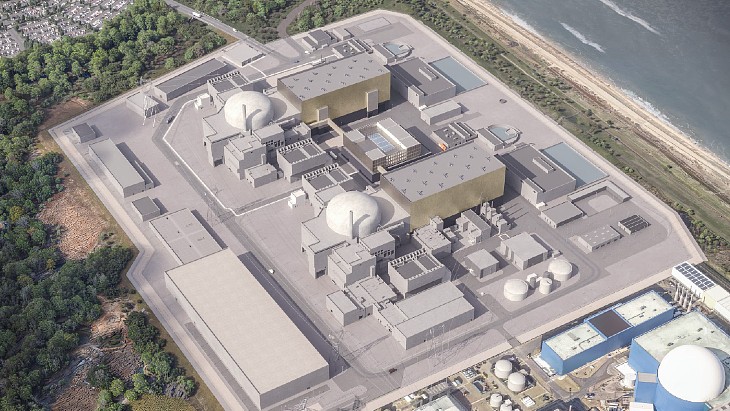The mechanical handling plant provides equipment storage, inspection, package loading, unloading, decontamination and maintenance capabilities needed to support retrieval of historical nuclear waste from the Magnox Swarf Storage Silo (MSSS) and Pile Fuel Cladding Silo (PFCS). Mobilisation and concept design for the SMF began in 2011, and the project took over 3 million man-hours to complete, with a peak workforce of over 250 people. Cavendish, which as part of the SMF Delivery Team joint venture has been accountable for the project from concept design to handover, said it was delivered two weeks ahead of schedule and within its sanctioned budget.
The MSSS was built in the 1960s to store waste from the UK's earliest nuclear reactors. The 16-metre deep silos were constructed to accommodate the magnesium swarf waste produced by the decanning of Magnox fuel prior to reprocessing. The swarf was stored underwater, and the first facility of six silos began operations in 1964. By 1983 a total of 22 silos had been built, but by the early 1990s wet storage of Magnox swarf was superseded by dry storage.
The MSSS closed in 2000 and is now being decommissioned, but all the waste stored in the silos, including the water in which it is submerged, must be removed before the building can be demolished.
The PFCS is 21 metres high, subdivided internally into six individual compartments. It contains irradiated cladding materials removed from fuel assemblies used in some of the UK's earliest reactors at Windscale and Chapelcross and holds over 3200 cubic metres of intermediate-level waste. The PFCS was originally designed to remain sealed forever, but equipment has now been installed to enable the safe removal of the wastes so the facility can be decommissioned. Demonstration removal of waste is scheduled for later this year, with larger scale removal operations set to start in 2020.

.jpg)



_55530.jpg)
_42372.jpg)
_37521_70699.jpg)

_76087_55556.jpg)




